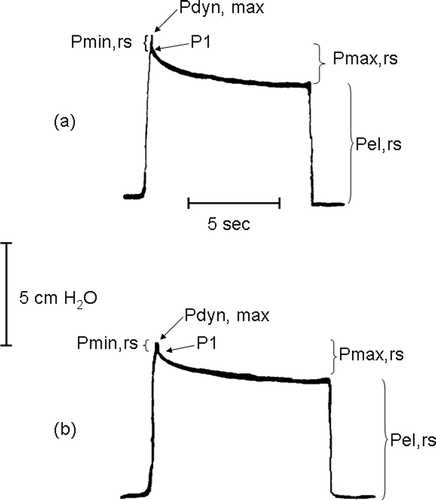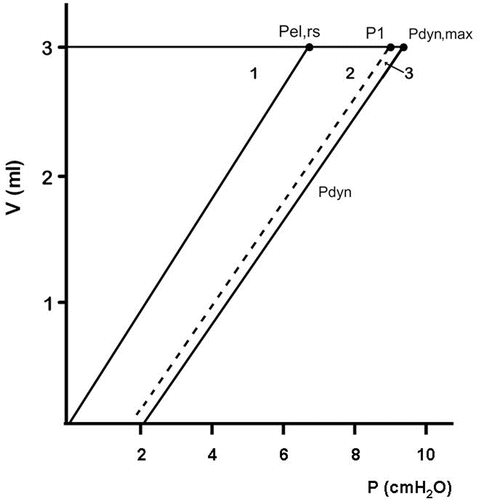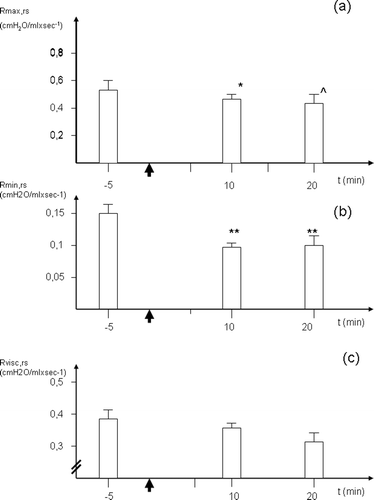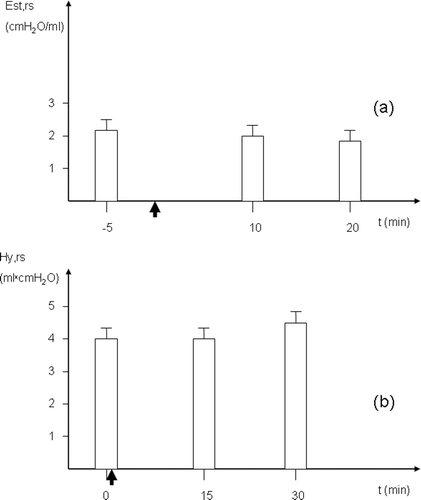Figures & data
Figure 1. Representative tracings of lateral tracheal pressure at flow interruption. Panels A and B show tracings recorded before and 20 min after i.p. 100 mg/kg captopril administration, respectively, in the same rat. The relevant pressures used for the calculations of respiratory system mechanics are indicated: maximal pressure at end-inflation (Pdyn,max), pressure immediatly after flow interruption (P1), static elastic pressure of the respiratory system (Pel,rs), pressure drop due to the ohmic respiratory system resistance (Pmin,rs) and total pressure drop including the effects of stress relaxation (Pmax,rs).

Figure 2. Schematic drawing of the pressure/volume relationship during constant flow inflation and flow interruption. Area 1 represents the elastic work of breathing (WOBel,rs), whereas areas 2 + 3 represent the total resistive work of breathing (WOBres,rs).WOBel,rs + WOBres,rs = total inspiratory work of breathing (WOBtot,rs). Area 3 represents the ohmic work of breathing (WOBohm,rs), dissipated to overcome ohmic airways resistance plus the viscous resistance to the movement opposed by the lungs and chest wall tissues. WOBres,rs−WOBohm,rs = WOBvisc,rs, the mechanical work done to overcome the resistive effects of stress relaxation.

Figure 3. Temporal sequence during experimental procedure: •: Start of mechanical ventilation, RM: respiratory mechanics measurements, *: electrocardiogram, Hy: Hy,rs measurement. ↑: i.p. injection.

Figure 4. Mean values (n = 9) of Rmax,rs (A), Rmin,rs (B) and Rvisc,rs (C) before and after 10 and 20 min captopril administration (time of injection indicated by the vertical arrow). *p < 0.05, **p < 0.01 and ^p = 0.07 with respect to values before captopril. Vertical bars represent one SE.

Figure 5. Mean values (n = 9) of Est,rs before and after 10 and 20 min (A) and of Hy,rs before and after 15 and 30 min (B) captopril administration (time of injection indicated by the vertical arrow). Vertical bars represent one SE. No significant difference was detected.

Table 1. Mean values of respiratory work of breathing and its components.
Table 2. Heart rate mean values (±SE, n = 9) over time from captopril injection (time = 0).